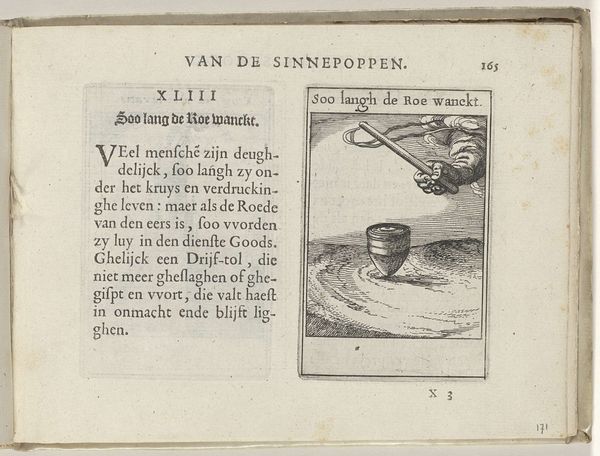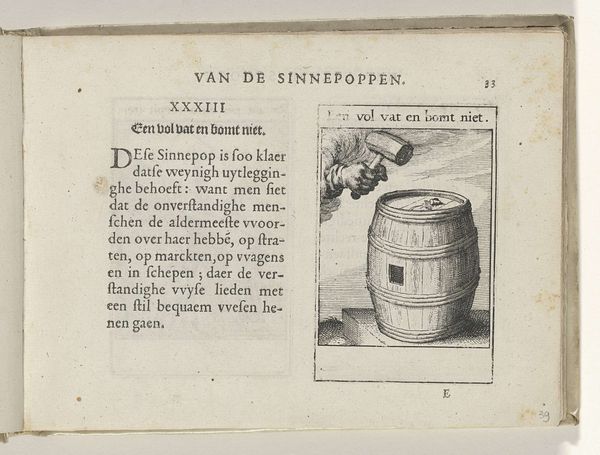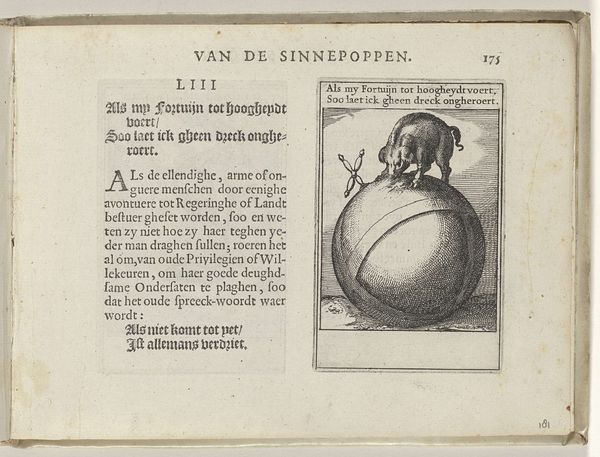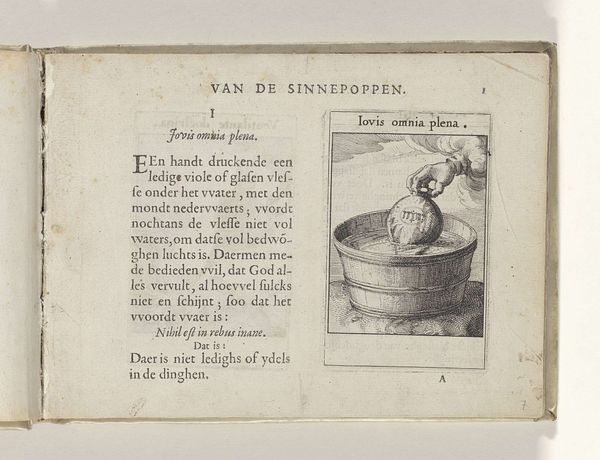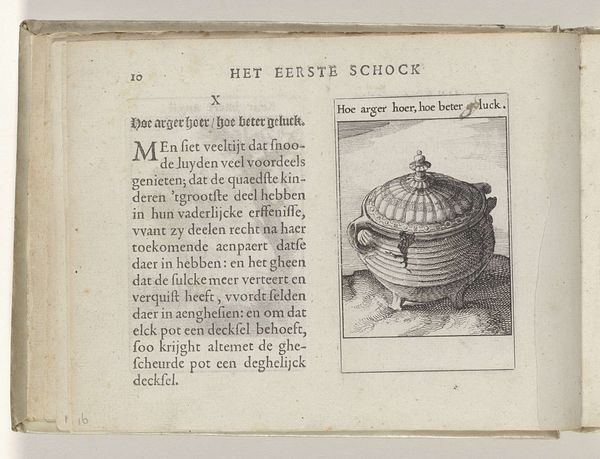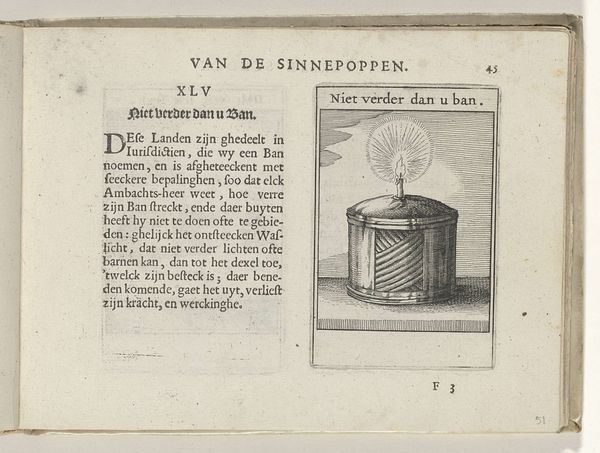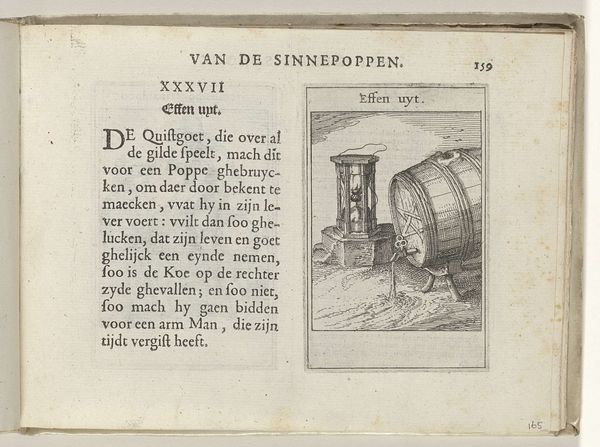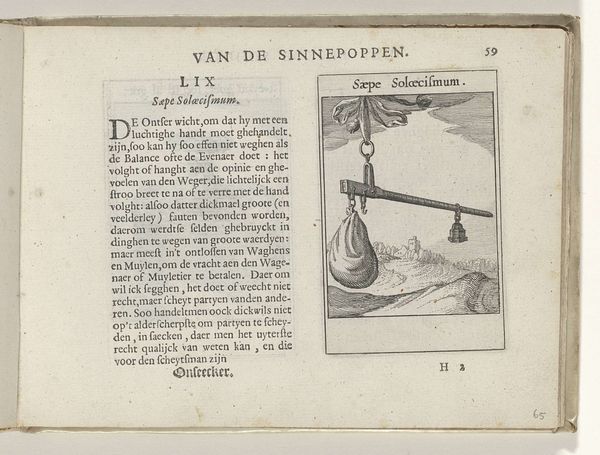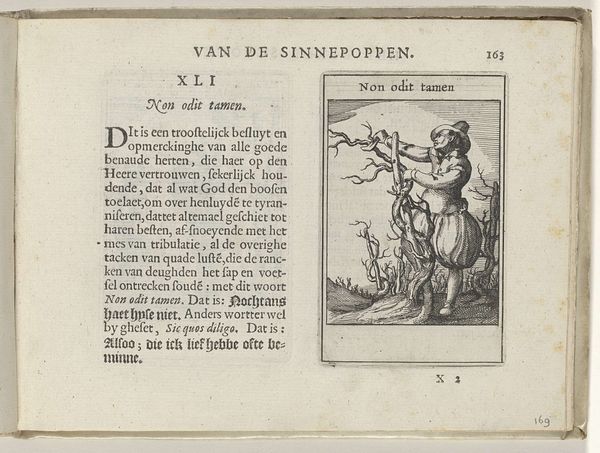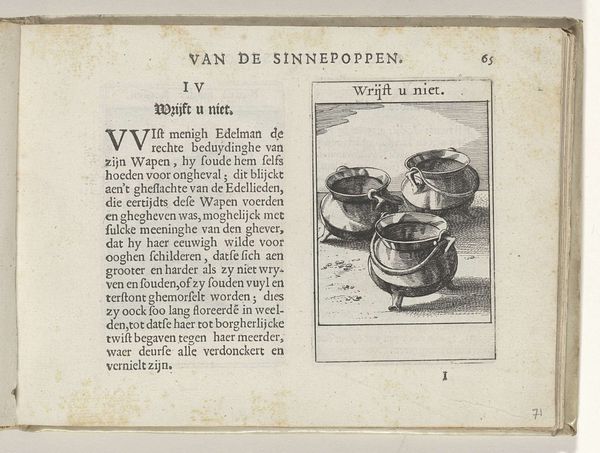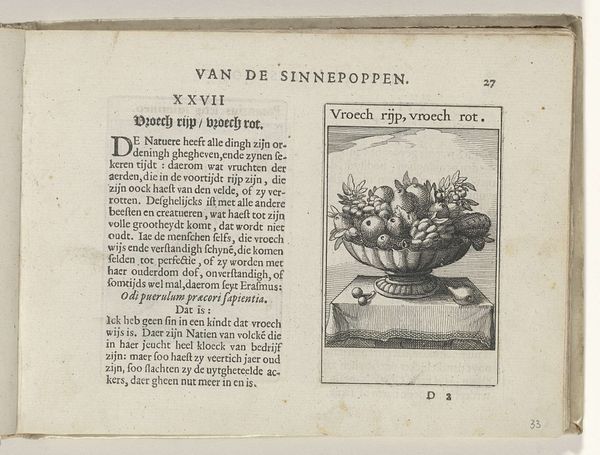
graphic-art, print, engraving
#
graphic-art
#
medieval
# print
#
engraving
Dimensions: height 137 mm, width 188 mm, height 95 mm, width 60 mm
Copyright: Rijks Museum: Open Domain
Curator: Standing here, we’re observing "XLIX Kalfjen spaert u hoy," an engraving by Roemer Visscher, created around 1614. It's currently held in the Rijksmuseum collection. Editor: It’s small, intimate. The tight linework of the engraving gives a textural density, especially around the pot itself. You can almost feel the rough surface of the ceramic. Curator: Indeed. Visscher was known for using emblems and symbolic imagery to comment on society, and this piece is an excellent example of that. It’s essentially a visual proverb. Editor: Proverb indeed. "A calf spares your hay"—what an odd phrase! So this is social commentary conveyed through everyday objects. But who would make something as mundane as putting the lid on a charcoal pot an art piece? It seems more craft, almost didactic. Curator: Well, we can analyze the cultural importance of these “house books,” which were very popular then. They were a new form of visual and textual communication. Think of them as an early form of popular media, addressing household economies, moral guidance, and shared cultural knowledge. The production and reception of these books played a very important social role in disseminating the accepted ethics and ideas of the Dutch middle class. Editor: The pot itself, though. Look at the attention to detail in rendering the form and texture. The process, from design to execution, required real skill and time—resources that signal this wasn’t just throwaway material. You have to also consider what the printmaking was done with - metal, the press, and who labored making the object. Curator: Precisely! The act depicted suggests thrift and careful management, virtues highly valued in the burgeoning Dutch Republic. You are encouraged to "spare your hay"—that is, be careful with your resources—so that when old age comes you do not want. Editor: It all connects – the humble pot becomes a vessel for wider societal values regarding careful husbandry. I had never imagined something like a charcoal pot would be pregnant with meaning and tell so much of a story. Curator: Seeing art in this light, grounded in the every day and social structure that led to its creation, makes our connection with the piece that much more relevant to modern experience. Editor: Right. Not simply pretty objects, but relics of lives lived and values cultivated through making. I will certainly never look at pottery the same way again.
Comments
No comments
Be the first to comment and join the conversation on the ultimate creative platform.
